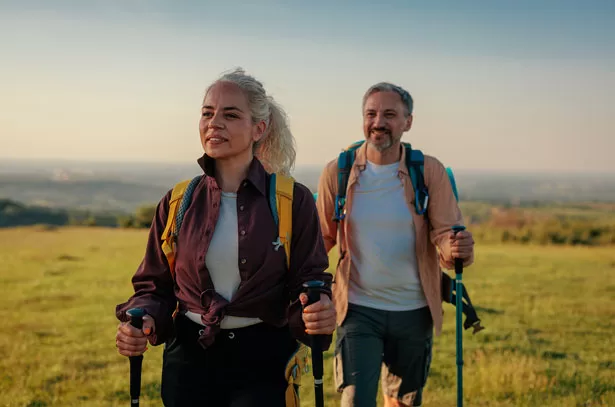Often, osteoporosis is perceived as predominantly affecting women, thus leading to a significant number of men being undiagnosed or improperly treated for the disease.
Osteopenia, a precursor:
Intriguingly, a recent study revealed that around 28% of men between the ages of 35 and 50 were found to have osteopenia, which is a precursor to osteoporosis. This percentage marginally outpaced the 26% found in women of the same age group. This discovery left the research community taken aback.
Furthermore, another piece of research pointed to a deficit of male-specific studies and the unavailability of reimbursements for DEXA scans as the two main roadblocks to an accurate diagnosis of osteoporosis in men.
Compounding the problem, even when the diagnosis is accurate, most physicians falter in providing effective treatment. However, there is a silver lining. Natural preventive measures and treatment plans do exist for osteoporosis, although they require a different approach for men.
Before diving deeper into that, let’s discuss why this bone disease is becoming increasingly common, and In an ironic twist, mainstream medicine seems to be contributing to the problem.
Treatment Options for Symptoms:
A multitude of pharmaceutical drugs marketed by major companies, surprisingly, have a counterproductive side effect – they debilitate your bones. While some cause internal damage to your bones, others make your bones more prone to fractures.
For instance, proton pump inhibitors such as Prilosec heighten the risk of spinal fractures by 58%. In addition, a comprehensive review showed that PPIs increased the risk of hip fracture by up to 30%.
Prednisone, a commonly used steroid, doubles your overall fracture risk and almost triples your likelihood of experiencing spinal fractures. The detrimental effects linger even after discontinuation of the drug.
A paper published in Bone showed a 56% higher fracture risk for individuals using acetaminophen compared to non-users.
Even more alarming, the drugs often prescribed to manage osteoporosis ironically contribute to the issue.
Medications like Boniva and Fosamax, commonly prescribed for osteoporosis, are actually detrimental for patients – regardless of gender – suffering from brittle bones. Though they’re meant to enhance bone density, they result in weaker bones more susceptible to breaks.
These osteoporosis medications operate by exterminating osteoclasts, the cells responsible for old bone removal. While this technically increases bone density, it creates a scenario where your bones are packed with old bone and calcium deposits that should have been removed. This leaves no space for new healthy bone tissue, making the remaining bone weak and prone to breakage.
Treatment Options for the Cause:
At Peak Male Institute, we guide patients towards strengthening their bones by boosting testosterone levels – naturally. This crucial hormone is essential for maintaining robust, dense bones.
As you age, your free testosterone levels drop, which results in weaker, more fracture-prone bones. This decline stems from reduced testosterone production and an increase in sex hormone binding globulin, or SHBG.
Here’s how it works…
Nearly all your testosterone — around 98% — is seized by a protein known as SHBG. As you age, the levels of SHBG rise and begin to latch onto the remaining 2% free testosterone. When testosterone is bound to SHBG, it can’t interact with androgen receptors as intended.
Furthermore, SHBG not only binds to testosterone but also to another hormone called estradiol. Typically, that’s beneficial because men should not have excessive amounts of estradiol. However, it’s necessary to have enough estradiol to maintain bone strength.
If SHBG is not addressed, no quantity of prescribed testosterone will prevent your bones from breaking. Surprisingly, a new meta-analysis of seven clinical trials found that testosterone replacement therapy alone does not increase bone density.
Three techniques to naturally strengthen your bones:
Improve bone health by reducing SHBG: To build sturdy bones, you need to increase your testosterone naturally, but it’s crucial to lower your SHBG levels. We recommend a completely natural herb known as nettle, or Urtica dioica. Nettle houses a compound that binds with SHBG. By binding to SHBG, nettle liberates your testosterone, allowing it to contribute to bone building.
Nettle can be found in tinctures and capsules. Seek a tincture containing at least 65% nettle. If opting for capsules, ensure you’re getting a minimum of 140 mg of the root extract, which houses a higher concentration of the SHBG-lowering compound.
Enhance bone solidity with boron: This mineral facilitates your body’s absorption of calcium and assists in its adherence to your bones. Boron is also critical to magnesium absorption, an essential nutrient that aids your bones in calcium absorption. Boron supplements can cut your daily calcium and magnesium loss by up to 50%. Aim for a daily intake of 3 to 6 mg.
Retain more calcium in your bones: A plethora of research shows the necessity of vitamin K2 for maintaining calcium in your bones (and preventing it from ending up in your arteries). Ensuring adequate vitamin K2 intake can lower your risk of spinal fractures by 60%, other non-spinal fractures by 81%, and hip fractures by 77%.
Good dietary sources of vitamin K2 include egg yolks, raw milk, natto, and organ meat. If you prefer supplementation, choose the MK-7 form of vitamin K2. We recommend taking between 45 mcg to 90 mcg of vitamin K2 daily.
Below are a few reputable sources and studies that support the information provided in the article:
References:
- A study by Bass et al. explored “Bone Mineral Density Among Men and Women Aged 35 to 50 years”, published in J Am Osteopath Assoc. 2019;119(6):357-363.
- An informative piece on “Osteoporosis in Males” by Bello MO and Garla VV, accessible via StatPearls. 2022. (URL provided in the original article).
- Nehra AK and colleagues provided a review on the “Emerging concerns of Proton Pump Inhibitors”, published in Mayo Clin Proc. 2018;93(2):240–246.
- “Proton Pump Inhibitors and Risk of Hip Fracture: A Meta-analysis of Observational Studies” by Poly TN, et al., published in Osteoporos Int. 2019;30(1):103-114.
- A detailed study titled “Glucocorticoid-induced Osteoporosis” by Briot K and Roux C, as seen in RMD Open. 2015;1(1):e000014.
- A work by Williams LJ et al., discusses “Paracetamol (Acetaminophen) Use, Fracture, and Bone Mineral Density”, featured in Bone. 2011;48(6):1277-1281.
- Kharwadkar N, et al., researched “Bisphosphonates and Atypical Subtrochanteric Fractures of the Femur”, published in Bone Joint Res. 2017;6(3):144–153.
- A meta-analysis by Junjie W, et al., titled “Testosterone Replacement Therapy has Limited Effect on Increasing Bone Mass Density in Older Men”, as published in Curr Pharm Des. 2019;25(1):73-84.
- A study by Nielsen FH, et al., explores the “Effect of Dietary Boron on Mineral, Estrogen, and Testosterone Metabolism in Post-menopausal Women”, as published in FASEB J. 1:394-7, 1987.
- Cockayne S, et al., performed a “Systematic Review and Meta-analysis of Randomized Controlled Trials on Vitamin K and the Prevention of Fractures”, as seen in Arch Intern Med. 2006;166(12):1256-1261.




